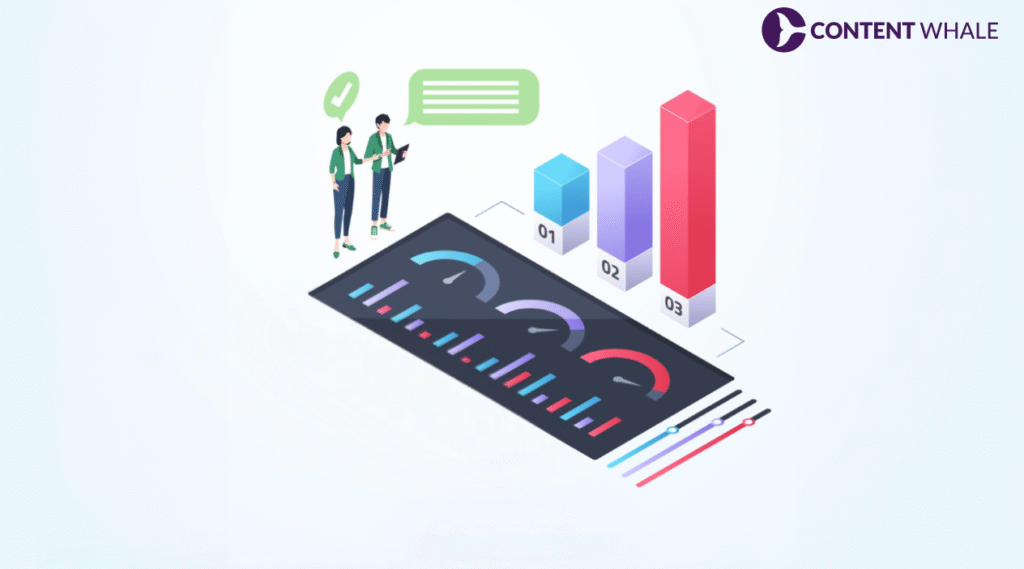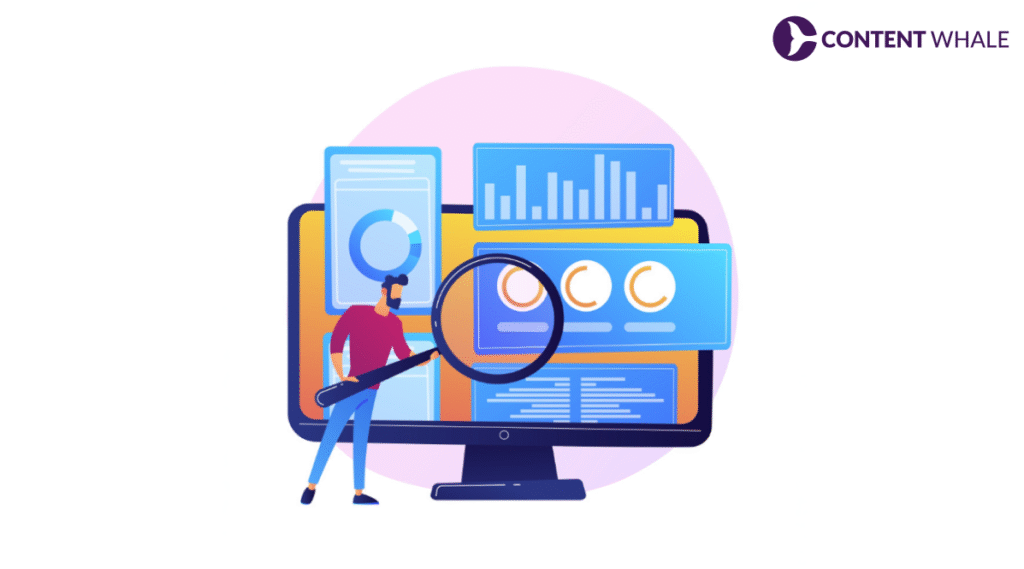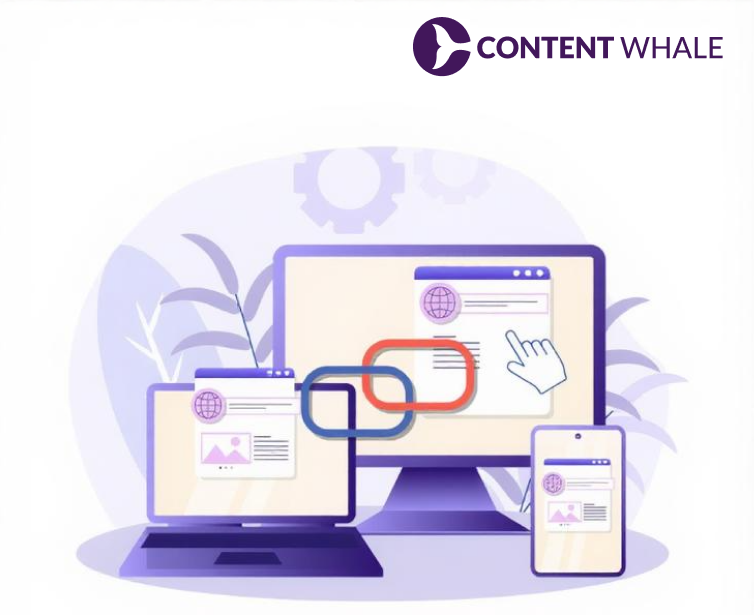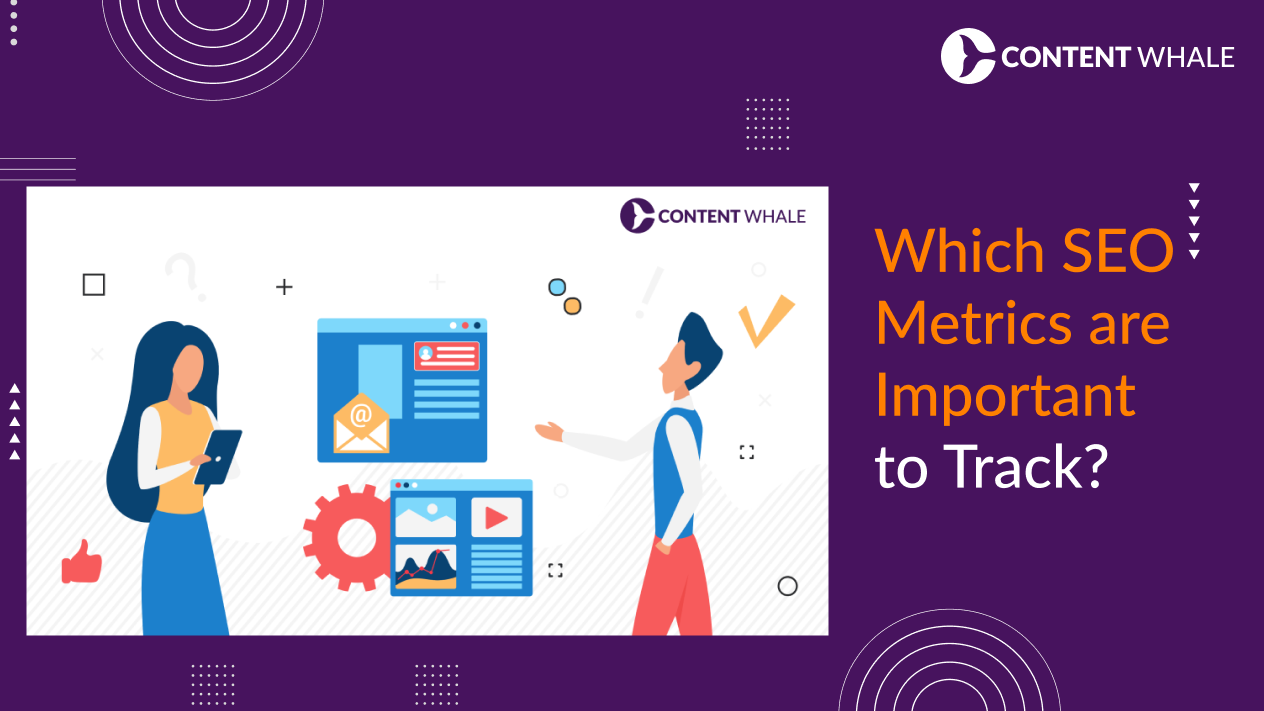Your dashboard shows 10,000 monthly visitors, but your conversion rate sits at 0.5%. You rank on page one for 50 keywords, yet your revenue hasn’t budged. 68% of marketers track seo metrics that look impressive but drive zero business value.
Traditional search engine optimization metrics no longer tell the complete story. The top organic result receives 39.8% of clicks in 2025, but AI Overviews now appear in 13.14% of queries. Zero-click searches reached 60% of all searches in 2024, forcing businesses to rethink how they measure success (Source).
This guide will help you identify which seo kpis actually drive revenue growth, show you how to track them using Google Analytics 4 and Search Console, and eliminate the vanity numbers wasting your budget. From organic traffic analysis to AI visibility tracking, you’ll understand exactly which search engine optimization metrics separate winning campaigns from meaningless data.
Understanding SEO Metrics vs SEO KPIs
Many businesses confuse seo metrics with seo kpis, treating all numbers equally. This mistake leads to tracking data that looks good in reports but generates zero revenue.
The Critical Difference Between Metrics and KPIs
SEO metrics measure activity inside search engines: organic traffic, keyword rankings, click-through rate, and site speed. These numbers reveal how your strategy performs over time.
SEO KPIs focus on outcomes. They measure whether search engine optimization metrics lead to signups, purchases, or calls. A site can generate 50,000 monthly visitors (metric) but achieve only 10 conversions (KPI), exposing fundamental problems with traffic quality.
How to Choose the Right Metrics for Your Business Goals?
Your business model determines which seo performance tracking numbers matter:
• E-commerce sites: conversion rate and average order value from organic traffic.
• B2B companies: Lead generation with visitor-to-lead conversion rates averaging 2.7%.
• Service businesses: organic conversions and ROI measurement.
Start by defining 3-5 core seo kpis aligned to revenue goals. Track search impressions and organic traffic weekly, monitor keyword rankings monthly, and review backlink quality quarterly.

Core SEO Metrics Every Business Should Track
Revenue-focused businesses track seo metrics that predict growth, not vanity numbers. These measurements connect directly to business outcomes.
Organic Traffic: Your Primary Success Indicator
Organic traffic measures visitors reaching your site through search results without paid advertising. 53% of all website traffic comes from organic search in 2025, making it the dominant channel.
Google Analytics 4 tracks organic traffic under Reports > Acquisition > Traffic Acquisition, filtered by Organic Search. Professional services achieve the highest organic conversion rates at 4.1%, while B2B eCommerce averages 1.8%.
Keyword Rankings and Position Tracking
Keyword rankings show where your pages appear for specific search queries:
• Position 1: 39.8% CTR
• Position 2: 18.7% CTR
• Position 10: 2.5% CTR
• Top 3 results: 68.7% of all clicks
Track keyword rankings using tools like Ahrefs or SEMrush. Focus on commercial intent keywords rather than informational queries for better conversion potential.
Search Impressions and Visibility Metrics
Search impressions measure how many times your site appears in results, regardless of clicks. Growing impressions indicates content appears for more queries or ranks more consistently.
Google Search Console displays impressions alongside clicks and average CTR. Rising impressions with declining CTR suggests ranking improvements for low-intent keywords or title tag issues.

Conversion-Focused SEO Metrics for Revenue Growth
Traffic without conversions wastes the budget. These seo kpis connect search engine optimization metrics directly to revenue.
Organic Conversion Rate and Lead Generation
Organic conversion rate shows the percentage of visitors from search who complete desired actions. Calculate: Total conversions ÷ Total organic traffic × 100.
Industry benchmarks:
• Average across industries: 2.7%
• Professional services: 4.1%
• B2B eCommerce: 1.8%
• E-commerce average: 2.5%
Set up conversion tracking in Google Analytics 4 by defining specific events like form submissions or purchases. Filter by organic search to isolate search-driven results.
ROI Measurement for SEO Campaigns
ROI represents the truest measure of SEO value. Calculate: (Revenue from organic traffic – Cost of SEO) ÷ Cost of SEO × 100.
Key ROI statistics:
• SEO delivers an average 748% ROI for businesses with transactional keywords
• Organic search leads close at 14.6% vs. 1.7% for outbound (8.5x better)
• SEO reduces lead costs by 61% compared to outbound methods
Visitor-to-Lead Conversion Tracking
Visitor-to-lead conversion rate measures how effectively organic traffic becomes qualified leads. Define trackable actions, create reports filtered by organic traffic, then calculate your rate.
Mature marketing plans prioritize lead generation over raw traffic numbers. Monitor this seo kpi monthly to assess whether content attracts the right audience and landing pages convert effectively.

Technical SEO Metrics That Impact Performance
Technical health determines whether search engines can access, crawl, and rank your content. These seo metrics prevent traffic loss from preventable issues.
Core Web Vitals and Page Experience Signals
Core Web Vitals measure user experience based on page speed and performance:
• Largest Contentful Paint (LCP): Loading performance
• First Input Delay (FID): Interactivity
• Cumulative Layout Shift (CLS): Visual stability
Only 11.9% of web pages meet at least one Core Web Vitals metric. Access your report in the Search Console to identify pages needing optimization.
Index Coverage and Crawl Errors
Index coverage shows how many pages Google successfully indexed versus errors encountered. Track in Search Console under Coverage.
Common issues:
• Crawl errors
• Server errors
• Pages blocked by robots.txt
• Redirect chains
A site with 1,000 pages but only 600 indexed loses 40% of search visibility. Monitor crawl stats weekly.
Site Speed and Mobile Optimization Metrics
Site speed affects both rankings and conversion rates. Over half of customers abandon sites taking longer than 3 seconds to load. Mobile devices account for 62.54% of organic search traffic.
Test page speed using Google PageSpeed Insights. Compress images, enable browser caching, and minimize JavaScript to reduce load times.

User Engagement Metrics for SEO Success
Engagement metrics reveal whether content satisfies search intent. Google uses these signals to assess relevance and adjust rankings.
Click-Through Rate (CTR) and SERP Performance
Click-through rate measures the percentage of users clicking your page after seeing it in results:
• Position 1: 39.8% average CTR
• Moving up one position: 32.3% CTR increase
• Rich results: 58% of clicks
• Non-rich results: 41% of clicks
Google Search Console shows CTR by query. Low CTR despite high rankings indicates title tag or meta description issues.
Dwell Time and Bounce Rate Analysis
Dwell time measures how long users stay on your page before returning to search results. Longer dwell time correlates strongly with first-page rankings.
Google Analytics 4 replaced bounce rate with engagement rate, measuring visitors who spend meaningful time, view multiple pages, or complete events. High engagement signals content quality to search engines.
Pages Per Session and User Flow
Pages per session reveals how many pages visitors view during each visit. Higher numbers indicate compelling content that encourages exploration.
Track these metrics in Google Analytics 4. If organic traffic views 1.5 pages per session while paid traffic views 3.2, your SEO content may not align with search intent.
AI-Era SEO Metrics for 2025
AI Overviews and zero-click searches reshape how users find information. Traditional seo metrics miss critical visibility happening directly in search results.
Zero-Click Search Tracking and Impact
Zero-click searches occur when users find answers on results pages without clicking any site:
• 60% of searches ended without clicks in 2024
• Projections show rates surpassing 70% by 2025
• Featured snippets, knowledge panels, and AI Overviews drive this behavior
• Rising impressions with flat clicks indicates zero-click growth
Monitor by comparing impressions to clicks in Search Console. Optimize for snippet visibility while creating compelling content that drives clicks for deeper information.
AI Overview Visibility and Brand Mentions
AI Overviews now dominate informational queries:
| Metric | 2025 Data | Impact |
| Query Coverage | 13.14% (up from 6.49% in Jan) | Growing monthly |
| Click Reduction | 34.5% decrease | Significant traffic loss |
| Zero Brand Mentions | 26% of brands | Complete invisibility |
| Top 50 Brand Share | 28.9% of citations | Winner-take-most effect |
Track AI Overview presence using SEMrush’s AI Optimization feature. Create authoritative, well-structured content with comprehensive coverage to increase citation chances.
LLM Referral Traffic Monitoring
Large language models like ChatGPT and Perplexity generate new referral traffic patterns:
• ChatGPT traffic grew 44% in November 2024
• Perplexity reached 15 million monthly users
• AI search traffic converts better than traditional sources
• Content clarity matters more than keyword density
Build tracking dashboards for:
• LLM referral traffic sources
• Organic-to-LLM traffic ratios
• LLM referral conversions
• AI platform citation frequency
Use Google Analytics 4 segments to track these data points.

Backlink Quality Metrics and Authority Signals
Backlinks remain critical ranking factors, though quality now trumps quantity. These seo metrics measure your site’s authority.
Domain Authority and Trust Indicators
Domain authority approximates how search engines evaluate your site’s trustworthiness:
• Moz: Domain Authority
• Ahrefs: Domain Rating
• SEMrush: Authority Score
Top-ranking pages have 3.8x more backlinks than positions 2-10. 95% of pages have zero backlinks, while 92.3% of top 100 ranking domains have at least one (Source).
Referring Domains and Link Quality Assessment
Referring domains count unique sites linking to yours. Quality matters more than quantity, one relevant, authoritative link outperforms dozens of weak ones.
Focus on backlinks from sites with domain ratings above 70. Track using SEO tools that automatically generate reports. Businesses with blogs get 97% more backlinks than those without.
How Content Whale Can Help?
Content Whale specializes in creating SEO-optimized content that moves the needle on your most important seo kpis. Our team develops content strategies based on actual search engine optimization metrics tied to revenue, not vanity numbers.
We help businesses track the right indicators:
• Organic traffic growth and quality analysis
• Conversion rate improvements and optimization
• AI visibility tracking across multiple platforms
• Keyword rankings that generate actual revenue
• Backlink quality assessment and building
• Engagement metrics that predict customer behavior
Content Whale can help you build content that drives measurable results across traditional search and AI platforms, ensuring your brand maintains visibility regardless of how search evolves.
Conclusion
Tracking the right seo metrics separates growing businesses from those stuck chasing rankings without results. Organic traffic matters only when paired with strong conversion rates, keyword rankings serve as leading indicators rather than final goals, and AI visibility now competes with traditional SERP positions.
Start with 3-5 core seo kpis aligned to business objectives. Monitor search impressions, click-through rates, and organic conversions weekly. Add AI overview tracking and zero-click search analysis to monthly reviews. Use Google Analytics 4 and Search Console together for comprehensive seo performance tracking.
Ready to transform your SEO strategy with data-driven content? Let Content Whale help you track and improve the seo metrics that generate real revenue growth.
FAQs
Q1: What are the most important SEO metrics to track in 2025?
Track organic traffic, conversion rate, keyword rankings, Core Web Vitals, click-through rate, and AI Overview visibility for revenue-focused seo performance tracking.
Q2: How do I track organic traffic conversion rates?
Use Google Analytics 4 to set up conversion events, filter by organic search source, then divide conversions by organic traffic for your rate.
Q3: Why are keyword rankings less important than before?
AI Overviews and zero-click searches mean top rankings don’t guarantee clicks, with 60% of searches ending without clicks in 2024.
Q4: What is the difference between SEO metrics and KPIs?
SEO metrics track search activity like traffic and rankings, while SEO KPIs measure business outcomes like conversions and revenue growth.
Q5: How do AI Overviews affect SEO metrics tracking?
AI Overviews appear in 13.14% of queries and reduce clicks by 34.5%, requiring new tracking for zero-click impact and brand visibility.
Q6: Which tools are best for SEO performance tracking?
Google Analytics 4, Google Search Console, SEMrush, Ahrefs, and Moz provide comprehensive tracking for organic traffic, conversions, rankings, and backlinks.





